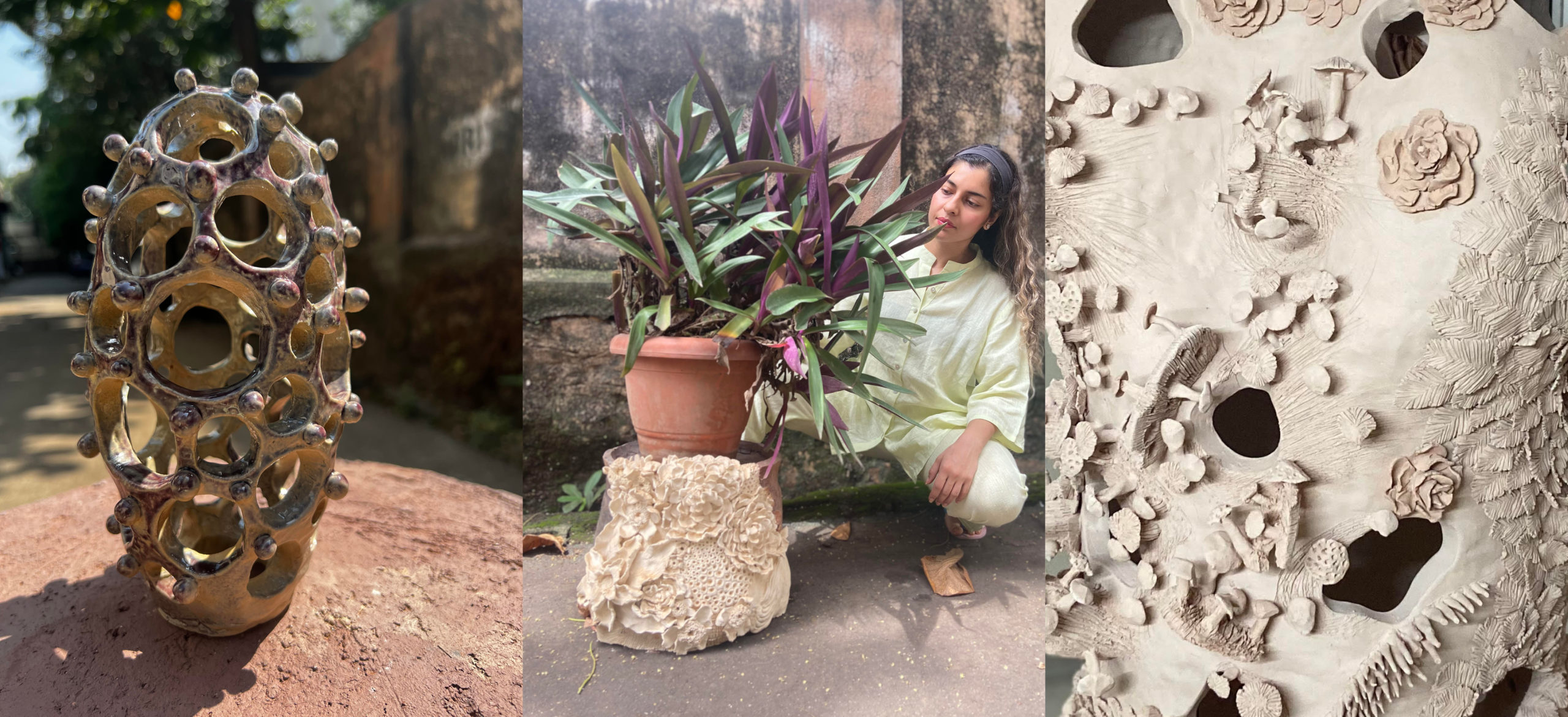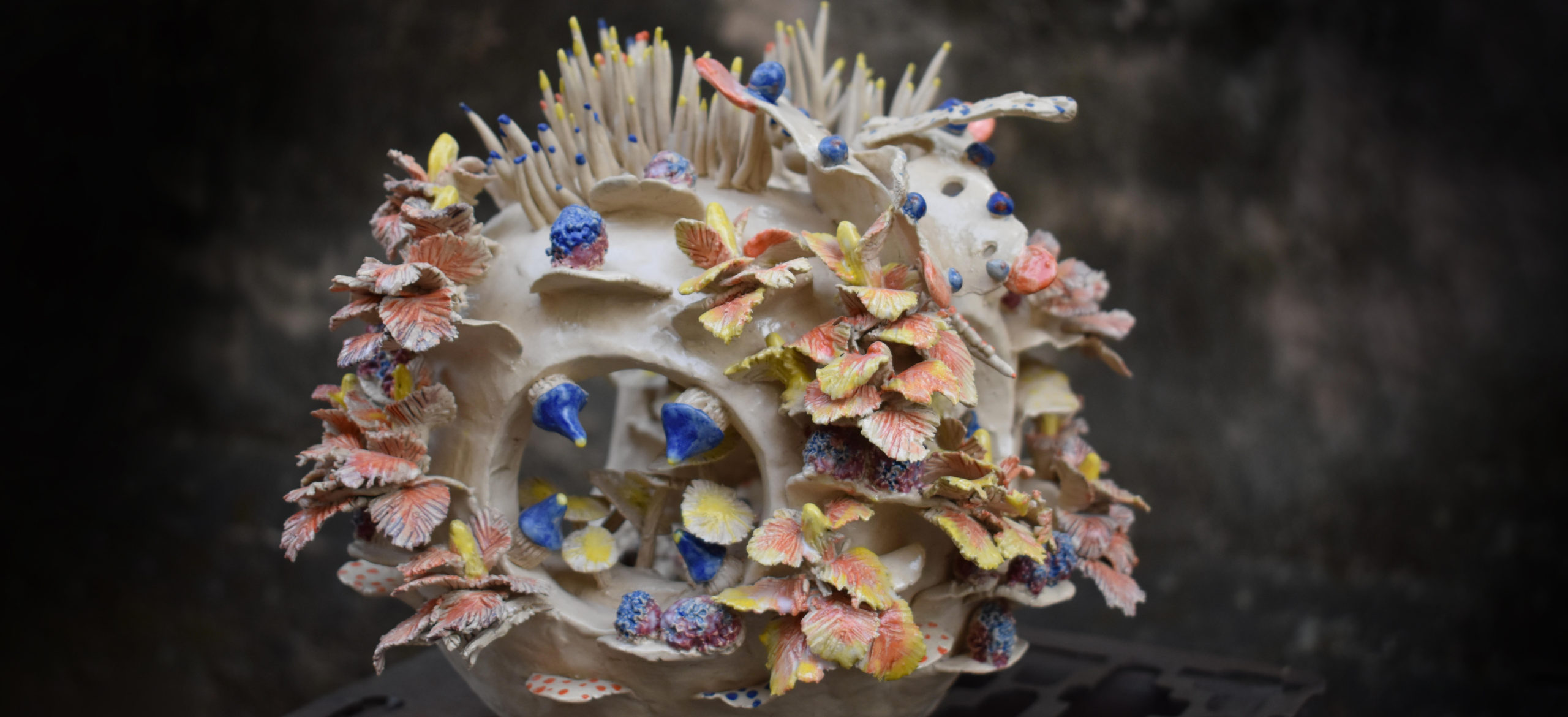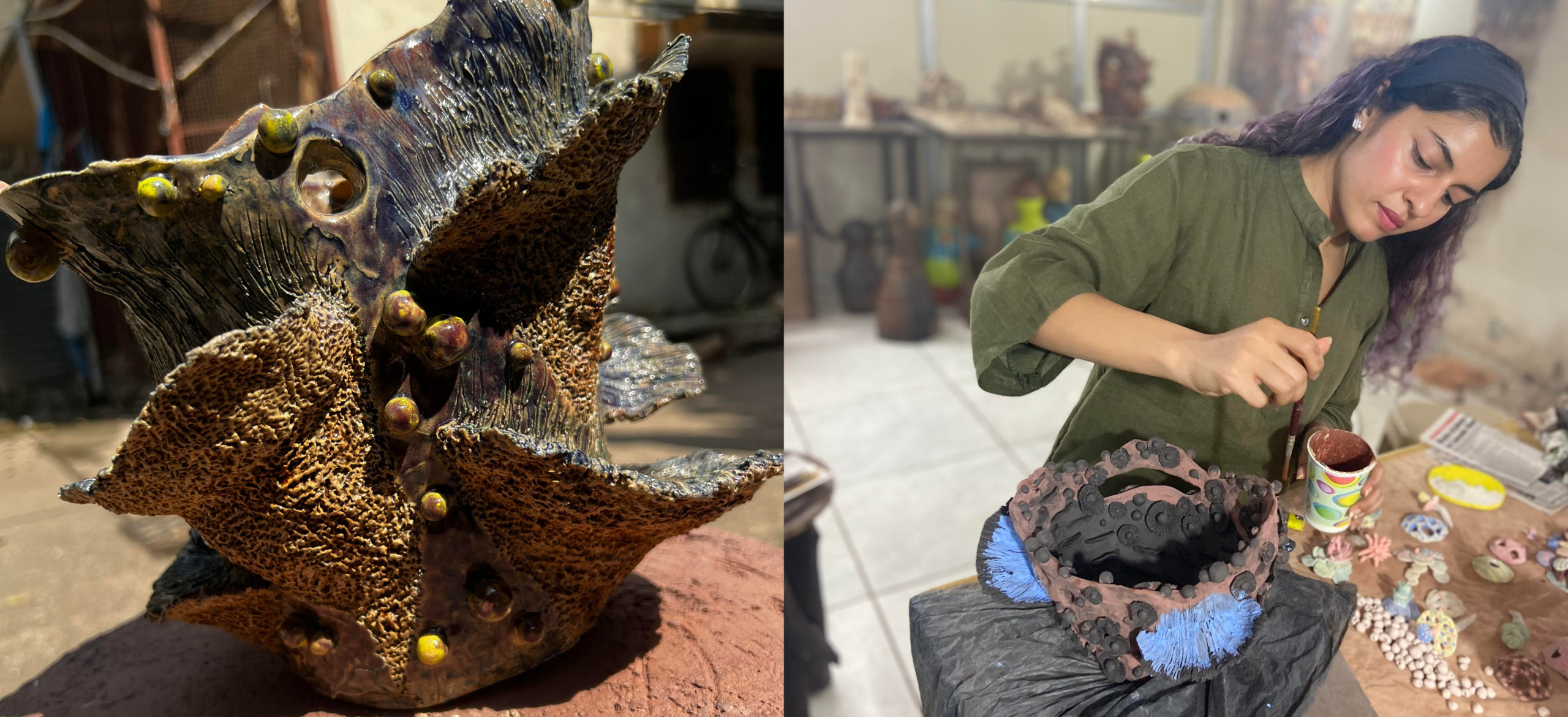
Vinita Mungi: Contemporary Artist
Indian Artist and Sculptor Vinita Mungi shares with us her experience as a contemporary artist in the contemporary Indian society, and reflects upon how her time in Florence has contributed to her artistic journey.
Tell us about your time at LdM, is there a particular memory that stands out in your mind?
During my semester at LdM, I had the wonderful opportunity to take a marble sculpture class. It was definitely the opportunity of a life-time.
I have always been drawn to creating art in a three-dimensional format and sculpting was a very unique skill set to have the opportunity to gain even on an amateur level. That will definitely always be a stand-out memory from my time at LdM.
How did studying in Florence, the heart of renaissance art, inform your work and perspective?
I had always wanted to study fine art in a culturally rich city like Florence. Studying in a city which is the heart of the Renaissance influenced how I looked at and thought about art. While I mainly carried out my undergraduate degree from SAIC (School of The Art Institute of Chicago) in Chicago, Florence was a very different but equally enriching experience in comparison. The city isn’t just rich in terms of the art made in it, or the artworks in its museums, but also because of the history and stories that come with it. Having literally studied about Renaissance art during my Freshman year, having the opportunity to be in Florence was surreal.
The work I made during my time there was influenced by a lot of the artists who were from the city and from Italy. The Historical Painting Class I attended was especially influential to my work. In comparison to the contemporary-art-focused education at SAIC, I found Florence a refreshing reminder of the history of art and of the value of the stylistic choices these artists made, as well as the impact they continue to have on contemporary art.
Has the LdM international environment been a source of reflection and inspiration?
I chose to use the semester at LdM as a way of gaining new skills and developing a more refined language for my artwork. Even though I didn’t take any ceramic classes during my time there (although my art practice now predominantly revolves around ceramics), I used the opportunity to expand my artistic knowledge and gain new perspectives on the art-making process.
I remember the etching printmaking class as being a lot of fun, and I enjoyed the process of being able to work the etching plate till I had reached the desired outcome. I’ve applied this act of correction, patience, and repetition in my ceramic practice until now.
How did you begin working in ceramics?
From the very first ceramic class I took at SAIC, I knew clay was my calling, as cliché as that sounds. I really enjoy the additive nature of working with clay and sculpting with clay. My obsession with clay started with the first throwing class I attended, which made me realise my interest was in sculpture, more than in throwing. I also realised that I conceptualise works in 3-D before making them, which is why I have always been drawn to more hands-on materials. Clay as a material has a mind of its own. Once an artwork is made, the kiln, the glazes, the firing temperature, everything affects the final piece. I love the unpredictability that clay offers, which is also one of the reasons why it is a very challenging material to work with. I enjoy the exceptional flexibility of clay, when the art piece is still malleable, as much as I like its fragility when it is in its drying stages. These are just some of the reasons why ceramics dominate my art practice.
What messages do you wish to convey in your artworks? In what role do you see yourself in contemporary Indian society?
The role of gender and female identity in India has always fascinated me, sometimes enraged me. My work deals with themes related to gender, identity, cultural history within the context of Indian society.
Gaining an education in fine arts from an American art school forced me to introspect and consider my role within the global spectrum of feminism and female artists and to question where I would wish to see myself. I had to face the fact that most of my education and artistic identity comes from a heavily western perspective and my self-identity consequently relies on those notions. I then shifted my interest and research into Indian female artists, activists, poets, and intellectuals belonging to the Post-colonial feminist movement.
I believe that the ideological construction of gender in India is male dominant. Through the use of symbolic representation of the human form and genitalia, I wish to address society’s problematic issues. I depict these symbols by abstracting them and also by intricately weaving them into natural or architectural environments. Through my pieces, I wish to create a utopian world where one’s chosen/existing sexual identifiers are as commonly present as plants, flowers or buildings. My work tends to be either large and ambiguous or to represent minute and delicate worlds.
The larger works have phallic forms; their surfaces are bright, colorful and celebratory alluding to the male-centric construct of sexuality in India. This is also intentionally a means of normalizing and liberating sexualized imagery. Through my work, I wish to create awareness and a sense of responsibility among my viewers. I would not like the viewers to feel confronted or triggered with an unsavory experience. The aesthetic value of my work is therefore definitely somewhat beautiful and requires the audience to look further than what it presents itself to be.
Although I like to use a multidisciplinary approach, I have always been drawn to clay and its ability to enhance the artist’s hand. Due to its flexible nature, clay can be used to create something specific and detailed and, at the same time, can also be used to make something abstract and quick. I like to implement both these techniques as I use clay to create quick 3-D maquettes which I then transform into larger finished works. Working with ceramics, I find the uncertainty of the outcome during the firing process extremely exciting and challenging. Even though clay has a historical association with artisanal crafts, I choose to use it as a medium to create works that are able to convey more than just their materiality. I also rely on portraiture as a technique to further my interest in marginalised sections of society by placing them in empowered positions.
Through my work, I wish to be able to translate my ideas about what it is like to be an Indian contemporary artist who is trying to talk about taboo topics such as self-identity, gender in society and sexual markers in the new, old India I live and create in.
Learn more about Vinita Mungi and her work as a contemporary artist.

